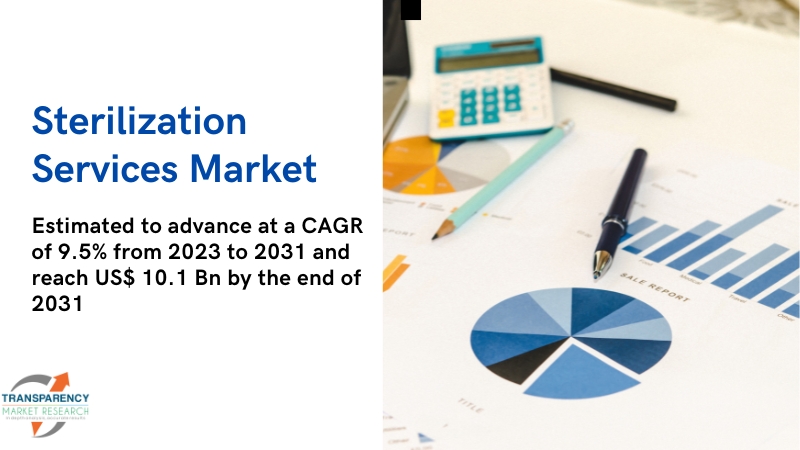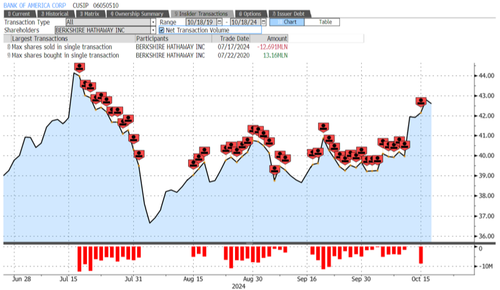
tumsasedgars Market Review: The Defiant Ones? Fresh from a vigorous ten-week rally that closed 2023 across equity and bond (finally!) markets alike, the calendar rolled over with optimism that (1) the Federal Reserve (Fed) was done hiking and (2) its array of closely-monitored economic measures would cooperate to facilitate a sooner-than-later pivot to easing. While nothing developed of sufficient surprise (yet!) that swayed expectations to a resumption of further tightening to monetary policy, there were ample instances of data appearing to defy the cumulative weight of 525 basis points (bps) in hikes to delay anticipation of when easing might kickoff, and the would-be frequency of cuts thereafter. Mainly, the "defiant ones" included jobs, prices and growth, reports of which suggested no urgency to the Fed for a cut, particularly on the inflation front, as the CPI climbed 0.
4% in both January and February, hardly evidence of surrender. Those prints, along with ongoing robustness in non-farm payrolls and a healthy expansion to GDP, caused rates market participants to reassess expectations for the path of Fed policy, with projections of an initial cut moved to June from March and 150 bps of 2024 easing trimmed to 75 bps. The Fed, for its part, maintained its resolve and gave no indication it was inclined to ease prematurely on unsupportive indicators.
Against this backdrop, every tenor across the U.S. Treasury curve moved higher on the quarter, some 40 to 50 bps beyond the 2-Year, continuing the inversion and delivering a reality check on what was an exuberant end to last year, in terms of hopes for the elusive soft landing and market returns.
Though the equity market seemed unfazed on the potential postponement of a return to an accommodative Fed trend with the S&P 500 Index ( SP500 , SPX ) notching a 10%-plus gain for the second consecutive quarter, the bond market bore the brunt of the backup in U.S. Treasury rates.
The Bloomberg U.S. Aggregate Bond Index fell 0.
8%, though an improved initial yield profile and positive sector effects, especially corporate, muted some of the drawdown versus earlier quarters of rising rates dating back to early 2022. High yield corporates outperformed, however, as the shorter duration character of high yield corporates, combined with equity-like enthusiasm, brought positive total returns of 1.5%, more than eclipsing the impact of higher rates with +160 bps of duration-adjusted performance.
Among high yield, down-in-quality led, with CCC-rated bonds returning 2.1% for the quarter and outpacing duration-matched Treasuries by 209 bps. Single B-rated bonds followed with a return of 1.
4% while BB-rated bonds gained just over 1.1% given their relatively longer duration profiles. Turning to sector performance, financials led with a return of 1.
8%, buoyed by strong performance among healthcare REITs, life insurance, and brokers. Industrials were up 1.5%, with most subsectors performing well, particularly energy, cyclicals, and non-cyclicals, while communications was the only sector to post negative returns, down 1.
9% for the quarter, weighed down by wireless and cable satellite. Despite strong returns across high yield bonds and loans over the quarter, fundamental stresses remain evident, especially in the loan sector, which has felt the impact of higher rates much more quickly given the primarily floating rate nature of the debt. The decline in default and distressed exchange volume at the end of 2023 was short-lived as both picked up in January and February, with activity driven by distressed leveraged loan transactions.
Relative to the same period last year, combined default and distressed exchange volumes are slightly lower (-3%) according to JP Morgan ( JPM ; 0.19%**) data. Par-weighed high yield bond and loan default rates ended the quarter at 3.
54% and 3.16%, respectively, with the gap between the two growing closer to levels not seen since early 2015. The impact of distressed exchanges on default activity is evident in the issue-weighed default data, with high yield bond issuer weighted default rates rising to 4.
36% while the leveraged loan issuer weighted default rate increased to 4.46%. These levels represent the largest difference on record between par and issuer weighed default rates.
At the same time, recovery rates have fallen precipitously as weaker loan covenants offer investors less protection from aggressive borrowers. Finally, capital market activity in the first quarter was robust, with high yield volumes reaching $88 billion while loan issuance neared $318 billion, both including refinancing activity, tracking well ahead of 2023 1Q volumes, per JP Morgan data. **Portfolio securities are stated as a percentage of the Fund's total net assets including cash and cash equivalents as of March 31, 2024.
You should consider the investment objectives, risks, charges and expenses of a mutual fund carefully before investing. A Fund's Prospectus and Summary Prospectus contain this and other information about the Fund. To receive a Prospectus, please call 800-386-3829 or you may download the Prospectus from the Fund's website at TCW.
com . Please read it carefully. Click to enlarge Performance Notwithstanding higher Treasury yields over the quarter on recalibrated inflation and Fed policy expectations, the TCW High Yield Bond Fund I-Class ( MUTF: TGHYX , "Fund") and FTSE U.
S. High Yield Cash Pay Capped Custom Index ("Index") posted positive total returns for the quarter, though the Fund's gain of 1.32% (net of fees) was 25 bps behind the Index.
As credit spreads continued to tighten during the quarter, positions were trimmed across industrials and financials, most notably in the energy, non-cyclicals, basic industry, and banking space. Given relatively strong performance across industrial sectors, underweight positions resulted in a drag, particularly the underweight to consumer cyclicals. The overweight to communications was also a drag as the sector trailed the broader high yield market, though favorable issue selection within the sector offset the drag, along with Euro denominated issues that posted stronger performance than index holdings.
Meanwhile, financials led among high yield corporates, thus the overweight position in the sector benefitted relative returns. Banks performed particularly well and were trimmed on improved valuations but remained a small overweight, contributing to performance. The underweight to finance companies, however, produced a small drag along with issue selection among insurance names.
Utilities remained a small underweight versus the Index, which resulted in a slight drag as the sector outpaced Treasuries by 65 bps on a duration-adjusted basis. Modest contributions also came from the allocation to bank loans, which outperformed high yield credit for the quarter, though the emphasis on higher quality credits was a broad drag on performance as lower quality outperformed amid strong demand for risk assets and a relatively shorter duration profile vis a vis investment grade credit. Outlook and Positioning Though the U.
S. economy has seemingly defied all expectations throughout the course of this Fed hiking cycle, the impacts of 525 bps of Fed hikes and ongoing inversion of the yield curve cannot be fully discounted, even if they have thus far been held off. Indeed, the well-documented consumer spending of pandemic-era excess savings helped to blunt the initial impact, while 2023's continuation of the consumer dissaving theme with increased short-term credit utilization, including "buy now, pay later" schemes, helped further propel economic growth from the consumer side.
However, credit comes at a cost, and the growing balance on consumer credit cards and other financing options comes at a time where the interest on those balances are at extremely elevated levels. For lenders, this has translated to growing losses on unsecured consumer loans and commensurate tightening of lending standards, which will only serve to further slow the economy once it turns. On the corporate side, businesses are now multiple years into an elevated interest rate regime and have likely exhausted the primary means of protecting margins, including price reductions, hiring freezes, and a furloughing of employees to part time work, with layoffs the final piece that loosens the labor market and pushes the economy into a recession.
High yield companies, in particular, face growing refinancing risk amid higher rates that will ultimately raise interest expenses and cut into profits, particularly for those marginal borrowers with already challenged balance sheets. In fact, the leveraged loan sector has already begun to feel the impact of higher rates given the primarily floating rate nature of the debt, with elevated default rates and increasingly frequent distressed exchanges, which have similar economic consequences as default for end investors. At the same time, recovery rates have fallen precipitously as weaker loan covenants offer investors less protection from aggressive borrowers.
The ongoing risk-on sentiment and resultant compression of credit spreads across high yield corporates saw the average OAS move below 300 bps in March, indicating extremely rich valuations and low margin for error across the high yield market in aggregate. These valuations present an asymmetrical risk and reward profile; the likelihood of further meaningful compression from these levels is small, while the risk of significant widening as the sector reprices to a potentially slowing economy is high. As such, the Fund has capitalized on market strength to opportunistically trim exposures, with remaining positions emphasizing higher quality credits and defensive sectors like communications and non-cyclicals (especially healthcare and food & beverage), while avoiding cyclicals and sectors more closely tied to consumer spending and cyclical volatility.
Financials represent a small overweight with an emphasis on insurance credits (notably healthcare given attractive long-term fundamentals) and large money center banks in the U.S. Finally, an allocation to high quality leveraged loans is maintained as their more senior position in the capital structure relative to bonds provides downside protection, and their floating rate nature offers attractive income potential, though issue selection is particularly important.
Looking forward, the potential for elevated volatility presents opportunities to add to the corporate basis at more compelling valuations, likely in the latter half of 2024, with the Fund well positioned to deploy capital given its enhanced liquidity profile and up-in-quality bias. The performance data presented represents past performance and is no guarantee of future results. Returns assume all income items are reinvested.
Current performance may be lower or higher than the performance data presented. Performance data current to the most recent month end is available on the Fund's website at TCW.com .
Investment returns and principal value will fluctuate with market conditions. The value of an investment in the Fund, when redeemed, may be worth more or less than its original purchase cost. Please see additional disclosures on the following page(s).
IMPORTANT DISCLOSURE This material may include estimates, projections and other "forward-looking" statements. Actual events may differ substantially from those presented. TCW assumes no duty to update any such statements.
This material reflects the current opinions of the author but not necessarily those of TCW and such opinions are subject to change without notice. TCW, its officers, directors, employees or clients may have positions in securities or investments mentioned in this publication, which positions may change at any time, without notice. This material may include estimates, projections and other "forward-looking" statements.
Actual events may differ substantially from those presented. TCW assumes no duty to update any such statements. All projections and estimates are based on current asset prices and are subject to change.
Performance Detail as of March 31, 2024 Annualized (%) March 1Q 1 Year 3 Year 5 Year 10 Year Since Inception 1 TGHYX (I Share) Inception Date 2/1/1282 2 0.83 1.32 9.
11 1.95 4.43 4.
36 6.72 MUTF: TGHNX (N Share) Inception Date 2/26/1222 0.64 1.
09 8.63 1.61 4.
14 4.08 5.03 FTSE U.
S. High Yield Cash Pay Capped Custom Index 3 1.17 1.
57 11.34 2.40 3.
96 4.12 7.28-I; 6.
07-N Expense Ratio (%) I Share N Share Gross 0.88 1.37 Net 4 0.
55 0.80 Click to enlarge Annual fund operating expenses as stated in the Prospectus dated March 1, 2024, excluding interest and acquired fund fees and expenses, if any. The performance data presented represents past performance and is no guarantee of future results.
Returns assume all income items are reinvested. Current performance may be lower or higher than the performance data presented. Performance data current to the most recent month end is available on the Fund's website at TCW.
com . Investment returns and principal value will fluctuate with market conditions. The value of an investment in the Fund, when redeemed, may be worth more or less than its original purchase cost.
The annualized since inception return for the index reflects the inception date of the TCW Class I and N Share Funds, respectively. For periods 2/1/1989- 3/31/2024; 2/26/1999-3/31/2024. Since inception returns include the performance of the predecessor limited partnership for periods before the Fund's registration became effective.
The predecessor limited partnership was not registered under the Investment Company Act of 1940 ("1940 Act") and, therefore, was not subject to certain investment restrictions imposed by the 1940 Act. If the limited partnership was registered under the 1940 Act, its performance may have been adversely affected. FTSE U.
S. High Yield Cash Pay Capped Custom Index (TCW High Yield Bond Fund Benchmark) - Effective May 1, 2018, the Index was renamed the FTSE U.S.
High Yield Cash Pay Custom Index. The custom index is a blend of the FTSE U.S.
High Yield Cash Pay Index and the FTSE U.S. High Yield Cash Pay Capped Index.
The FTSE U.S. High Yield Cash Pay Index is created by removing the bonds in the Deferred-Interest Index from the FTSE U.
S. High-Yield Market Index. It includes only cash-pay bonds (both registered and Rule 144A) with at least one year to maturity and at least USD 250 million outstanding.
The FTSE U.S. High Yield Cash Pay Capped Index includes only cash-pay bonds of high yield debt issued by corporations domiciled in the U.
S. or Canada (both registered and Rule 144A) with at least one year to maturity and at least USD 250 million outstanding. It caps the total debt of any single issuer at USD 15 billion of par amount outstanding and also delays the entry of fallen angels for a minimum of one month after their downgrade to high-yield status.
The index is not available for direct investment; therefore its performance does not reflect a reduction for fees or expenses incurred in managing a portfolio. The securities in the index may be substantially different from those in the Fund. Effective March 1, 2024, the Fund's investment advisor has agreed to waive fees and/or reimburse expenses to limit the Fund's total annual operating expenses (excluding interest, brokerage, extraordinary expenses and acquired fund fees and expenses, if any) to 0.
55% of average daily net assets with respect to Class I shares and 0.80% of average daily net assets with respect to Class N shares. The contractual fee waiver/expense reimbursement will remain in place through March 1, 2025 and before that date, the investment advisor may not terminate this arrangement without approval of the Board of Directors.
Source: TCW, FactSet, State Street B&T Investment Risks High yield securities may be subject to greater fluctuations in value and risk of loss of income and principal than higher rated securities. It is important to note that the Fund is not guaranteed by the U.S.
Government. Fixed income investments entail interest rate risk, the risk of issuer default, issuer credit risk, and price volatility risk. Funds investing in bonds can lose their value as interest rates rise and an investor can lose principal.
Mortgage-backed and other asset-backed securities often involve risks that are different from or more acute than risks associated with other types of debt instruments. MBS related to floating rate loans may exhibit greater price volatility than a fixed rate obligation of similar credit quality. With respect to non-agency MBS, there are no direct or indirect government or agency guarantees of payments in pools created by non-governmental issuers.
Non-agency MBS are also not subject to the same underwriting requirements for the underlying mortgages that are applicable to those mortgage- related securities that have a government or government-sponsored entity guarantee. Please see the Fund's Prospectus for more information on these and other risks. IMPORTANT DISCLOSURE Glossary of Terms Agency MBS - The purchase of mortgage-backed securities issued by government-sponsored enterprises such as Ginnie Mae, Fannie Mae or Freddie Mac.
Asset- Backed Securities - A financial security backed by a loan, lease or receivables against assets other than real estate and mortgage-backed securities. Basis Point ('bps') - One hundredth of one percent, used chiefly in expressing differences of interest rates. BB Rating - Bonds which are less vulnerable to nonpayment than other speculative issues.
However, they face major ongoing uncertainties or exposure to adverse business, financial, or economic conditions which could lead to the obligor's inadequate capacity to meet its financial commitment on the obligation. B Rating - An opinion that the issuer has the current capacity to meet its debt obligations but faces more solvency risk than a BB-rated issue and less than a B- rated issue if business, financial, or economic conditions change measurably. Bloomberg Barclays U.
S. Aggregate Bond Index - A market capitalization-weighted index of investment-grade, fixed-rate debt issues, including government, corporate, asset-backed and mortgage-backed securities, with maturities of at least one year. The index is not available for direct investment; therefore its performance does not reflect a reduction for fees or expenses incurred in managing a portfolio.
The securities in the index may be substantially different from those in the Fund. Portfolio characteristics and securities are subject to change at any time. CCC Rating - A CCC rating represents an extremely high risk bond or investment; banks are not allowed to invest in CCC rated bonds.
CCC bonds are junk bonds. Corporate - Of or relating to a bond issued by a corporation as opposed to a bond issued by the U.S.
Treasury, a non-U.S. government or a municipality.
Credit - A contractual agreement in which a borrower receives something of value now and agrees to repay the lender at a later date, generally with interest. Credit also refers to the creditworthiness or credit history of an individual or company. Default - The failure to promptly pay interest or principal when due.
Duration - A measure of the sensitivity of the price (the value of principal) of a fixed-income investment to a change in interest rates. Duration is expressed as a number of years. Rising interest rates mean falling bond prices, while declining interest rates mean rising bond prices.
Euro - The official currency of the European Union's ('EU') member states. Expense Ratio - A measure of what it costs an investment company to operate a mutual fund. Federal Reserve (the Fed) - The central bank of the United States which regulates the U.
S. monetary and financial system. Floating Rate - Any interest rate that changes on a periodic basis.
The change is usually tied to movement of an outside indicator, such as the prime interest rate. GDP (Gross Domestic Product) - The market value of all final goods and services produced within a country in a given period of time. High Yield - A bond that is rated below investment grade.
Inflation - A condition of a rise in the general level of prices of goods and services in an economy over a period of time. Investment Grade - A bond that is rated Baa3/BBB- or higher by Moody's, Standard & Poors and Fitch. Leverage - The use of borrowed money to increase investing power.
A firm with significantly more debt than equity is considered to be highly leveraged. Liquidity - The ability to convert an asset to cash quickly. MBS (Mortgage-Backed Securities) - A type of asset-backed security that is secured by a mortgage or collection of mortgages.
These securities must also be grouped in one of the top two ratings as determined by a accredited credit rating agency, and usually pay periodic payments that are similar to coupon payments. Furthermore, the mortgage must have originated from a regulated and authorized financial institution. Monetary Policy - The actions of a central bank, currency board or other regulatory committee that determine the size and rate of growth of the money supply, which in turn affects interest rates.
Non-agency - Mortgage backed securities made up of mortgage loans that are not guaranteed by a government-supported agency. Non-Agency MBS - Mortgage backed securities sponsored by private companies other than government sponsored enterprises such as Fannie Mae or Freddie Mac. Non-cyclical - Non-cyclical stocks repeatedly outperform the market when economic growth slows.
Non-cyclical securities are generally profitable regardless of economic trends because they produce or distribute goods and services we always need, including things like food, power, water, and gas. OAS (Option Adjusted Spread) - Measures the part of the yield spread between a non-Treasury security and a Treasury security once the portion attributed to the call risk is removed. The OAS allows an investor to better compare the yield spread between bonds with and without embedded options (ie, putable and callable bonds).
Outperform - Outperform is when an investment is expected to perform better than the return generated by a particular index or the overall market. Since the performance of many investments is compared to a benchmark index, outperform refers to generating a higher return than a particular benchmark over time. Outperform also refers to an analyst's rating on a security, and outperform is a better rating than neutral and worse than a strong buy recommendation.
Overweight - A condition where the portfolio exposure to a given asset class (or risk measure) exceeds that of the benchmark index. QE (Quantitative Easing) - A form of monetary policy in which a central bank, like the U.S.
Federal Reserve, purchases securities from the open market to reduce interest rates and increase the money supply. Recession - Two consecutive quarters of negative economic growth as measured by a country's gross domestic product. REIT (Real Estate Investment Trusts) - Any corporation, trust or association that acts as an investment agent specializing in real estate and real estate mortgages under Internal Revenue Code Section 856.
S&P 500 - The S&P 500 Index, or Standard & Poor's 500 Index, is a market-capitalization- weighted index of 500 leading publicly traded companies in the U.S. The index actually has 503 components because three of them have two share classes listed.
Soft Landing - A soft landing is the goal of a central bank when it seeks to raise interest rates just enough to stop an economy from overheating and experiencing high inflation, without causing a severe downturn. Spread - The difference between the bid and the ask price of a security or asset. Tightening - Short for tight monetary policy.
A situation in which a central bank enacts relatively high target interest rates to lower the available of credit. Effectively "tightening" the supply of credit. Total Return - The rate of return on a security, including income from dividends and interest, as well as appreciation or depreciation in the price of the security, over a given time period of time.
Underweight - A condition where a portfolio does not hold a sufficient amount of a particular security when compared to the security's weight in the underlying benchmark portfolio. UST Curve - This curve, which relates the yield on a security to its time to maturity, is based on the closing market bid prices on the most recently auctioned Treasury securities in the over-the-counter market. U.
S. Treasuries (U.S.
Treasury Securities) - Bills, notes and bonds that are debt obligations of the U.S. government.
Valuations - The process of determining the current worth of an asset or company. There are many techniques that can be used to determine value, some are subjective and others are objective. Volatility - A measure of the risk of price moves for a security calculated from the standard deviation of day to day logarithmic historical price changes.
Widening - If the market becomes more skeptical about the creditworthiness of an issuing company, the spread of that company's bonds widens (its yield relative to the benchmark widens). Yield - The income return on an investment. This refers to the interest or dividends received from a security and is usually expressed annually as a percentage based on the investment's cost, its current market value or its face value.
Yield Curve - A curve on a graph in which the yield of fixed-interest securities is plotted against the length of time they have to run to maturity. For more information about the Fund call us at 800 386 3829. Visit our web site for a full menu of products and services at TCW.
com . The TCW Funds are distributed by TCW Funds Distributors LLC Click to enlarge Original Post Editor's Note: The summary bullets for this article were chosen by Seeking Alpha editors. Editor's Note: This article covers one or more microcap stocks.
Please be aware of the risks associated with these stocks..














